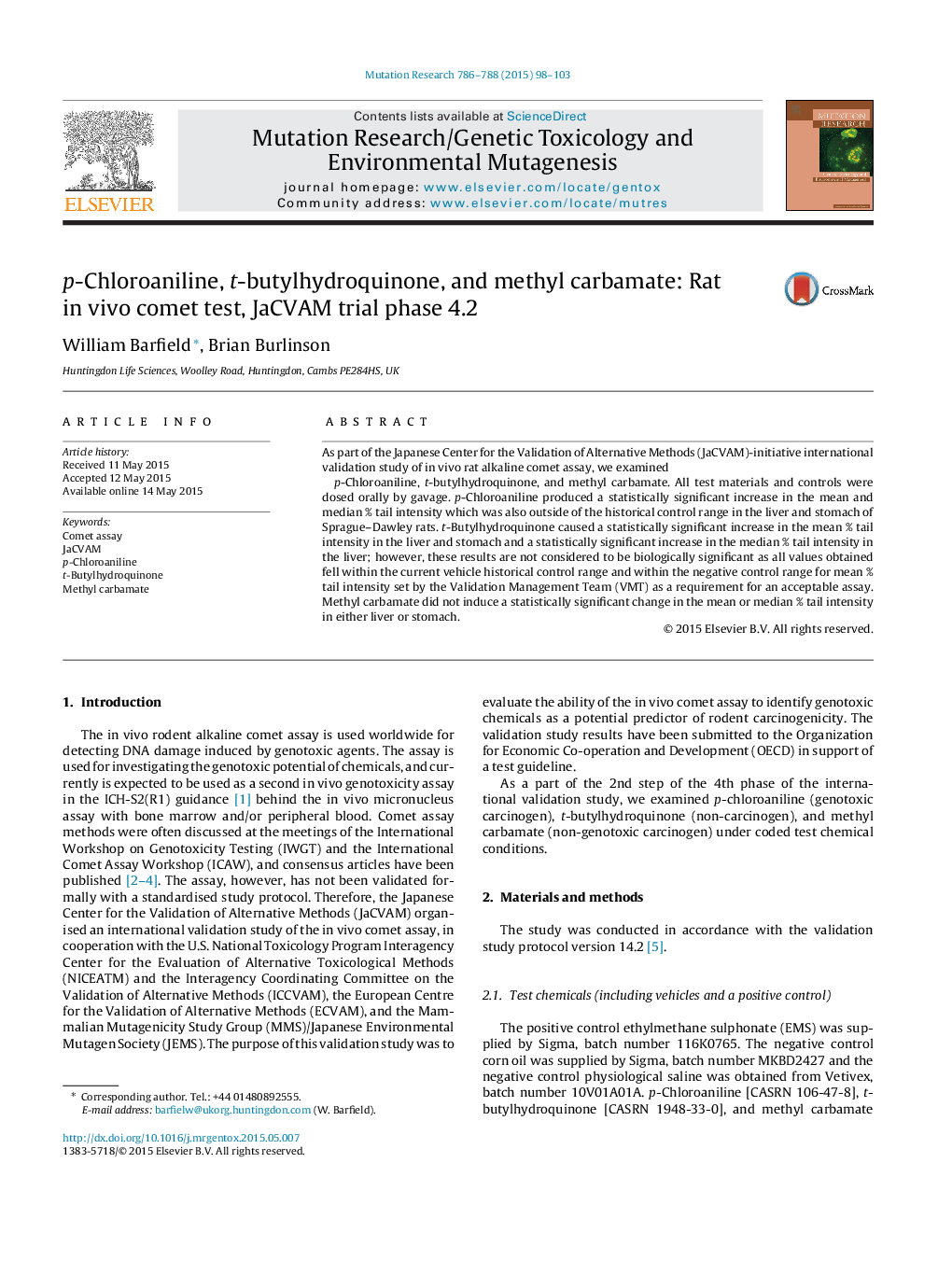| Article ID | Journal | Published Year | Pages | File Type |
|---|---|---|---|---|
| 8456364 | Mutation Research/Genetic Toxicology and Environmental Mutagenesis | 2015 | 6 Pages |
Abstract
p-Chloroaniline, t-butylhydroquinone, and methyl carbamate. All test materials and controls were dosed orally by gavage. p-Chloroaniline produced a statistically significant increase in the mean and median % tail intensity which was also outside of the historical control range in the liver and stomach of Sprague-Dawley rats. t-Butylhydroquinone caused a statistically significant increase in the mean % tail intensity in the liver and stomach and a statistically significant increase in the median % tail intensity in the liver; however, these results are not considered to be biologically significant as all values obtained fell within the current vehicle historical control range and within the negative control range for mean % tail intensity set by the Validation Management Team (VMT) as a requirement for an acceptable assay. Methyl carbamate did not induce a statistically significant change in the mean or median % tail intensity in either liver or stomach.
Related Topics
Life Sciences
Biochemistry, Genetics and Molecular Biology
Cancer Research
Authors
William Barfield, Brian Burlinson,
